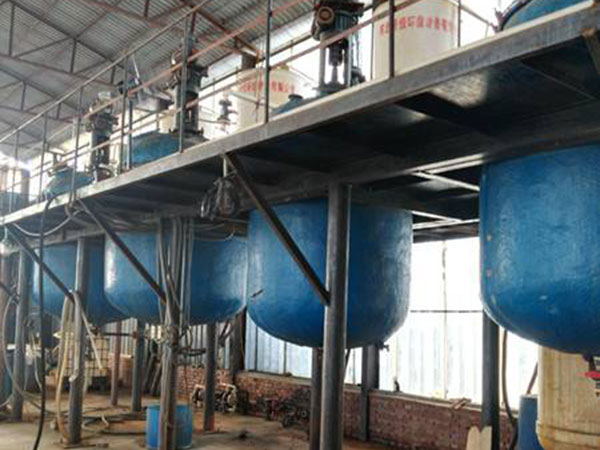| Description | Pyrethrins/Pyrethrum are natural insecticides produced by certain Chrysanthemum species of plants. In contrast, Permethrin (‘per-meth-rin’) is a synthetic, man-made insecticide, whose chemical structure is based on natural pyrethrum. Pyrethrum was first recognised as having insecticidal properties around 1800 in Asia and was used to kill ticks and various insects such as fleas and mosquitoes. Six individual chemicals have active insecticidal properties in the pyrethrum extract, and these compounds are called pyrethrins. Pyrethrum are viscous, tan-coloured brown resins, liquids, or solids which inactivate readily in air. Pyrethrum are soluble in organic solvents such as alcohol, kerosene, nitromethane, petroleum ether, carbon tetrachloride, and ethylene dichloride. A quick acting liquid insecticide especially suited for control of insect pests of vegetables, ornamentals, and exotic crops. The piperonyl butoxide ingredient is used to enhance the activity of the permethrin (synergist).
Pyrethrum has been used effectively to control insects for decades and is nonpersistent, decomposing rapidly in the environment. This rapid degradation of pyrethrum has resulted in little known cases of insect resistance, making it an excellent choice for the control of agricultural pests, control of insects on pets and/or livestock. Pyrethrum powder is toxic to ants, roaches, silverfish, bed bugs, fleas, wasps, spiders, crickets, mosquitoes, and just about every other category of unwanted house or garden pest. Because it decomposes rapidly in the environment, pyrethrum has been approved for a wide range of indoor and outdoor uses, including homes, restaurants, broad-scale spraying operations, and organic farms.

Pyrethrins break down quickly in the environment, especially when exposed to natural sunlight. Pyrethroids are manufactured chemicals that are very similar in structure to the pyrethrins, but are often more toxic to insects, as well as to mammals, and last longer in the environment than pyrethrins. Pyrethrins and pyrethroids are often combined commercially with other chemicals called synergists, which enhance the insecticidal activity of the pyrethrins and pyrethroids. The synergists prevent some enzymes from breaking down the pyrethrins and pyrethroids, thus increasing their toxicity. Technical-grade (concentrated) pyrethrins and pyrethroids are usually mixed with carriers or solvents to produce a commercial-grade formulated product. |
| Chemical Properties | Pyrethrum is a brown, viscous oil or solid. Oxidizes readily in air. Insoluble in water; soluble in other common sol- vents. Incompatible with alkalies. |
| Chemical Properties | Pyrethrum , derived from extracts of the Chrysanthemum cinerariaefolinum plant, is a combination of six pyrethrin isomers, namely, pyrethrin 1, pyrethrin 2, cinerin 1, cinerin 2, jasmolin 1, and jasmolin 2. Pyrethroids are synthetically derived commercial compounds similar to pyrethrum. Pyrethrins and pyrethriods are insoluble in water and have a low vapor pressure. Pyrethrum is subject to photodegradation and is oxidized rapidly in the presence of air (U.S. EPA, 2006c; ATSDR, 2003). |
| Uses | Household insecticide (flies, mosquitoes, gar- den insects, etc.). |
| Uses | Pyrethrum is used to control a wide range of insects and mites in public health, stored products, animal houses and on domestic and farm animals. It is used on glasshouse crops but has relatively limited use on field crops, vegetables and fruit. It is normally used with synergists such as piperonyl butoxide which inhibits metabolic detoxification. |
| Uses | Pyrethrins are used to kill a number of different flying and crawling insects and arthropods. First registered in the 1950s, currently over 1350 end-use products containing pyrethrins are available for agricultural, commercial, residential, and public health areas. They are used as household insecticides, as grain protectants, and to control pests on edible products just prior to harvest in a variety of locations, including residential, public, and commercial buildings, animal houses, warehouses, fields, and green houses. Pyrethrins are also extensively used in the field of veterinary medicine (U.S. EPA, 2006c; ATSDR, 2003).
Commercially available pyrethroids include allethrin, bifenthrin, bioresmethrin, cyfluthrin, cyhalothrin, cypermethrin, deltamethrin, esfenvalerate (fenvalerate), flucythrinate, flumethrin, fluvalinate, fenpropathrin, permethrin, phenothrin, resmethrin, tefluthrin, tetramethrin, and tralomethrin. |









 China
China


 Company information
Company information


